
NOTICE TO VIEWERS: This target was chosen by Teresa Frisch for the Wednesday night free webinar she holds on a bi-weekly basis. We at PSI use the targets she selects on this day so viewers will not wind up getting two different targets with the same set of coordinates. You can sign up for these free webinars at her web page under the option, "Online Classes & Discussions". Videos of all of Teresa's webinars are available on YouTube
TARGET 121010
The Church of the Holy Apostles
in Athens, Greece
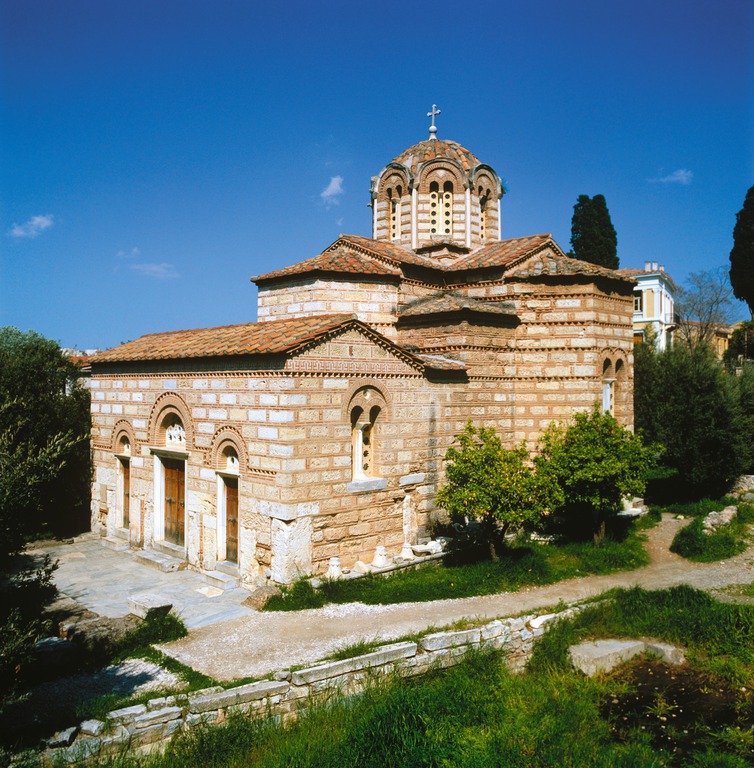
The Church of the Holy Apostles
The Church of the Holy Apostles, also known as Holy Apostles of Solaki or Agii Apostoli, is located in the Ancient Agora of Athens, Greece, and can be dated to around the last quarter of the 10th century.
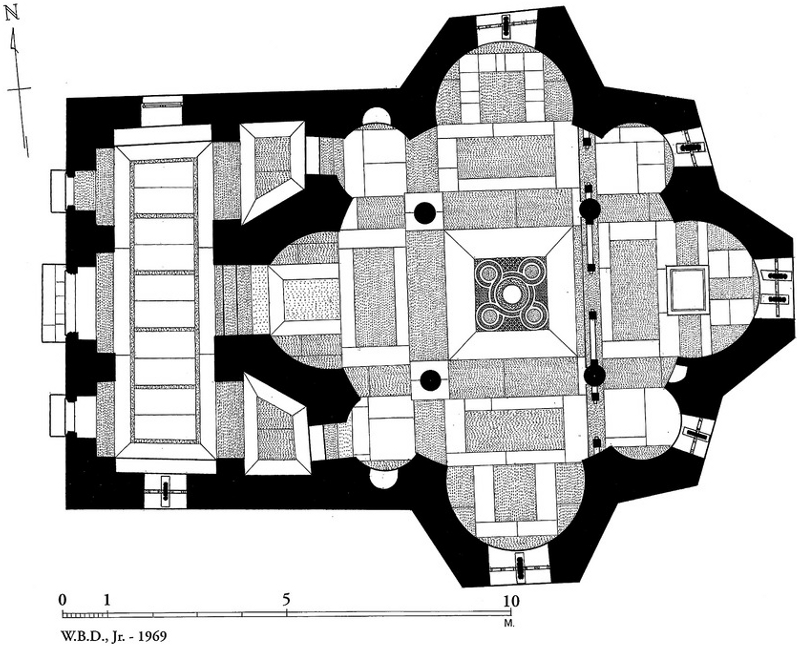
The Athenian-type floor planIt was the first significant church of the middle Byzantine period in Athens, and marks the beginning of the so-called "Athenian type" floor plan for a church, successfully combining the simple four-pier with the cross-in-square forms, in the shape of the Greek cross (a cross with all four arms of equal size).
As many Christian churches throughout Europe, this church was built on a previous holy site of the religion Christianity was replacing. The location here was once a Roman "nymphaion", a monument dedicated to the nymphs (gods of nature).

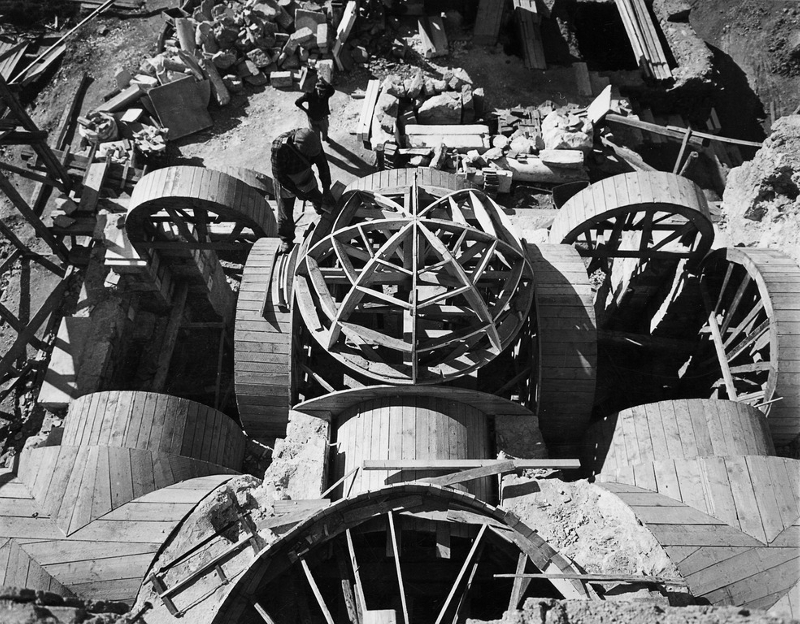
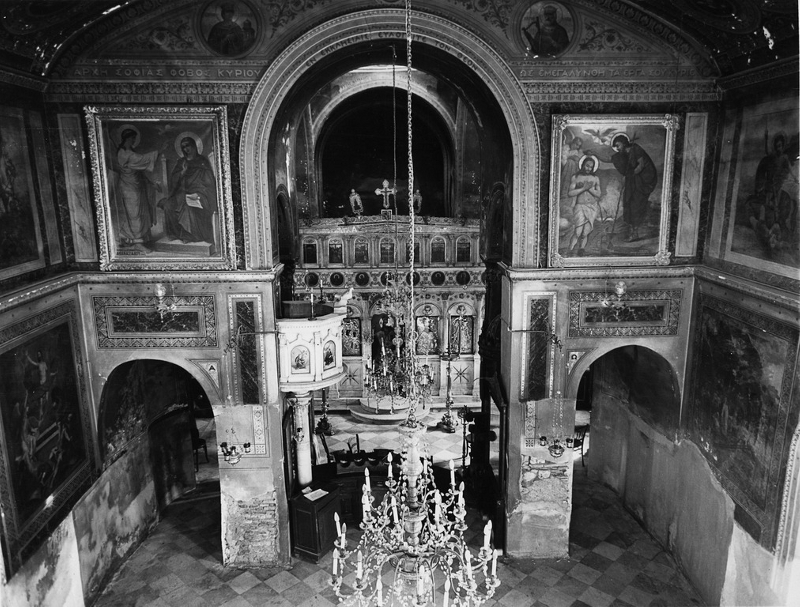
The reconstruction in 1954The church was slightly expanded during three reconstruction phases: the first added square niches at either end of the narthex (entrance); the second expanded the narthex to the west; and the third removed the narthex supports to create a longer nave (seatng area).
The church suffered damage during the war over Athens between the Ottomans and Venetians around 1687 and it was repaired in the 18th century.
Extensive restoration work was carried out in 1876-82, which unfortunately included unattractive extensions that altered the church's original form. These alterations were reversed during a restoration and excavation project carried out between February 1954 and September 1956. The present form of the church is close to that of the 10th-century original.
The church is built on the plan of a Greek cross (a cross with equal arms), with the entrance on the west side. Each arm ends in a semi-circular niche (or apse) and smaller niches are placed on either side of each apse.
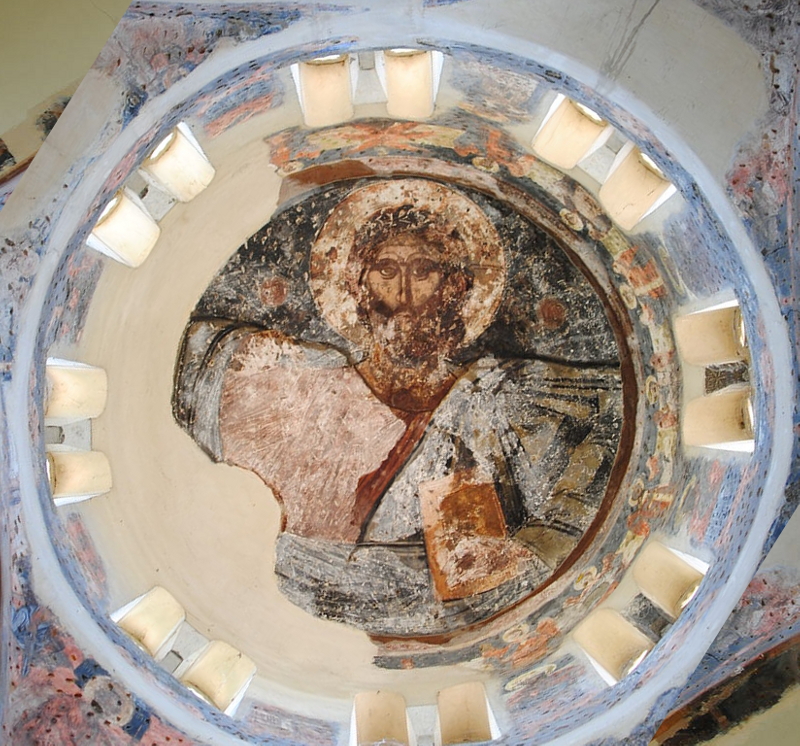
A dome rests on four pillars in the central crossing. The inside of the dome has the painting of Christ. This has been damaged, but not restored, because the attempt has been to have the church as true to the original as possible.
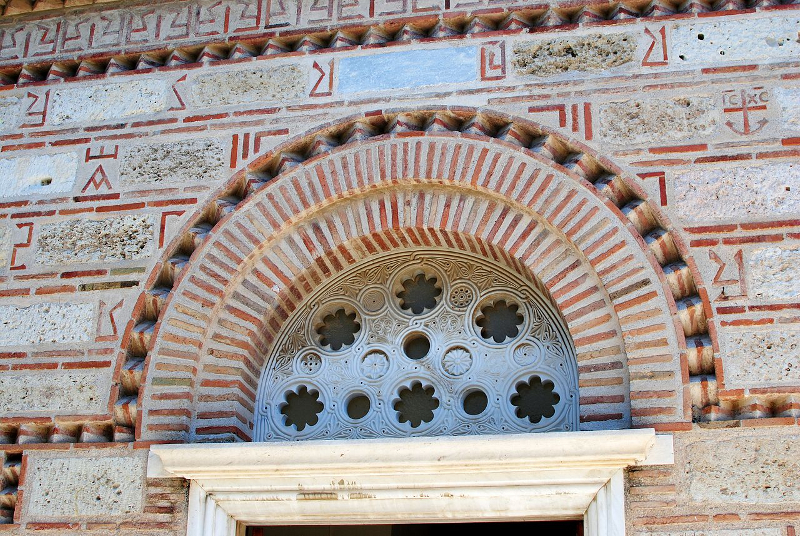
The entranceYou can see in the construction pictures, above, that a good amount of the framework is wood. The exterior, however, is stone brickwork and is decorated in places with Kufic lettering, the most ancient form of Arabian writing.
NOTE: I could not find any explanation for this lettering, but I know that it will almost certainly act as an attractor for some viewers, especially some of those at the more advanced levels of viewing. So this picture has been provided as feedback for those viewers who got perceptions of these symbols.
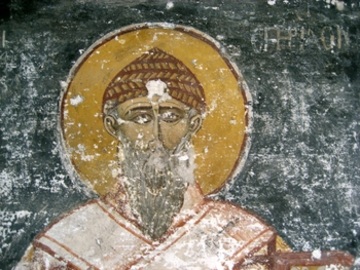
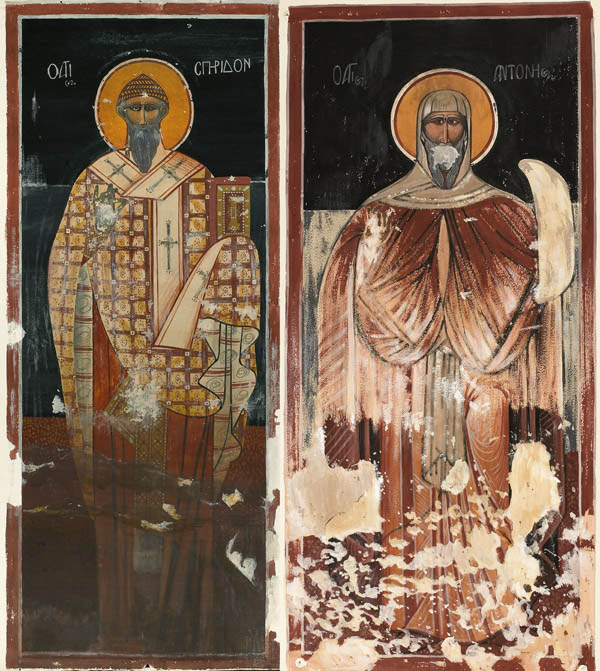
The interior of the church also has artwork from as early as early as the 1600's. Artwork from nearby churches have also been placed here.
The festival of the Twelve Apostles is still celebrated at the church every June 30th, and is open to the public.FEEDBACK MAP
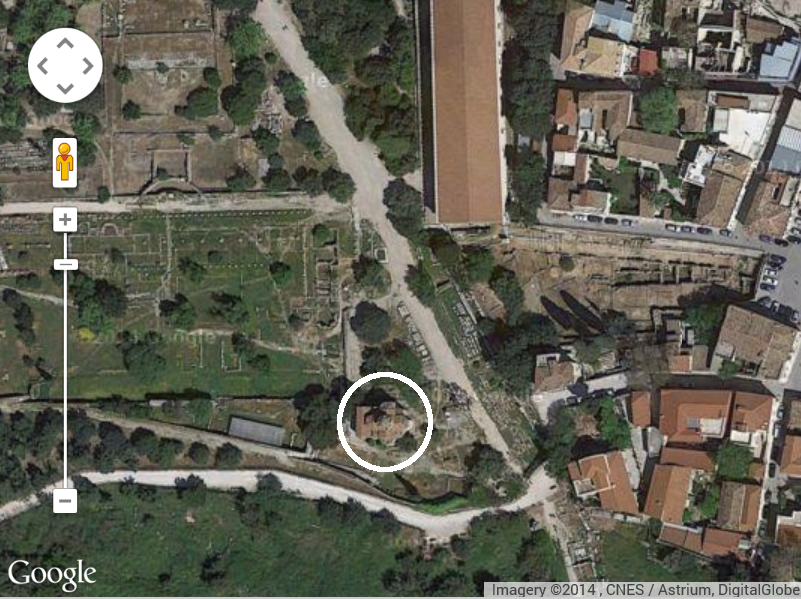
If you got impressions for which this feedback is insufficient, please take a look at the following web sites for more:
Sacred Destinations web site
Trip Advisor web site
Athens Information Guide
Mesogeia.net
Agathe web site
WikipediaMany thanks to Teresa Frisch for this target.